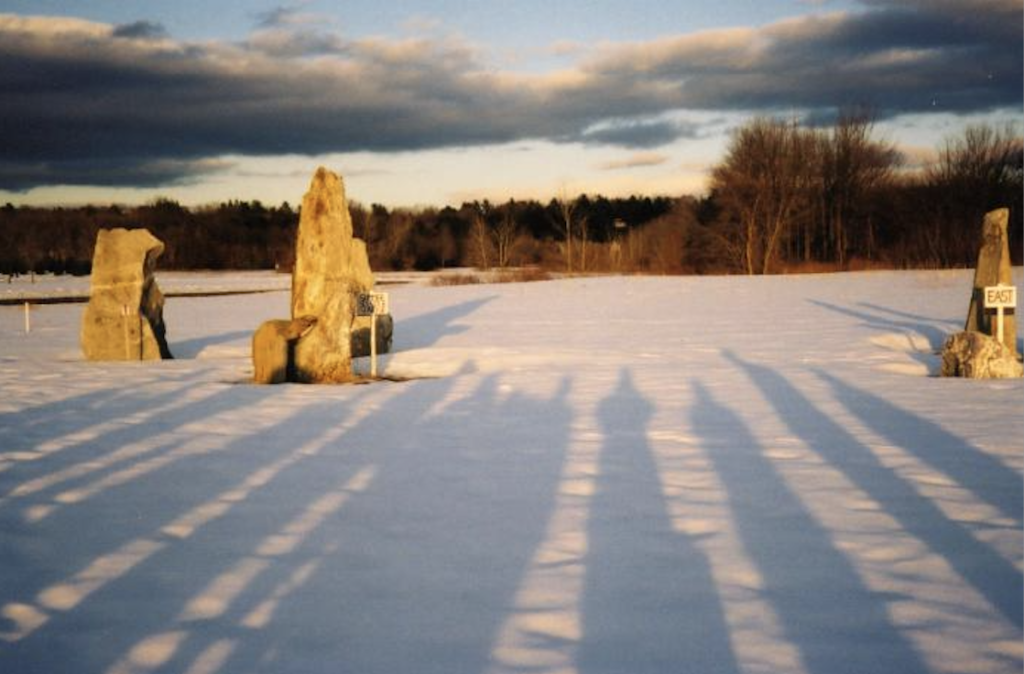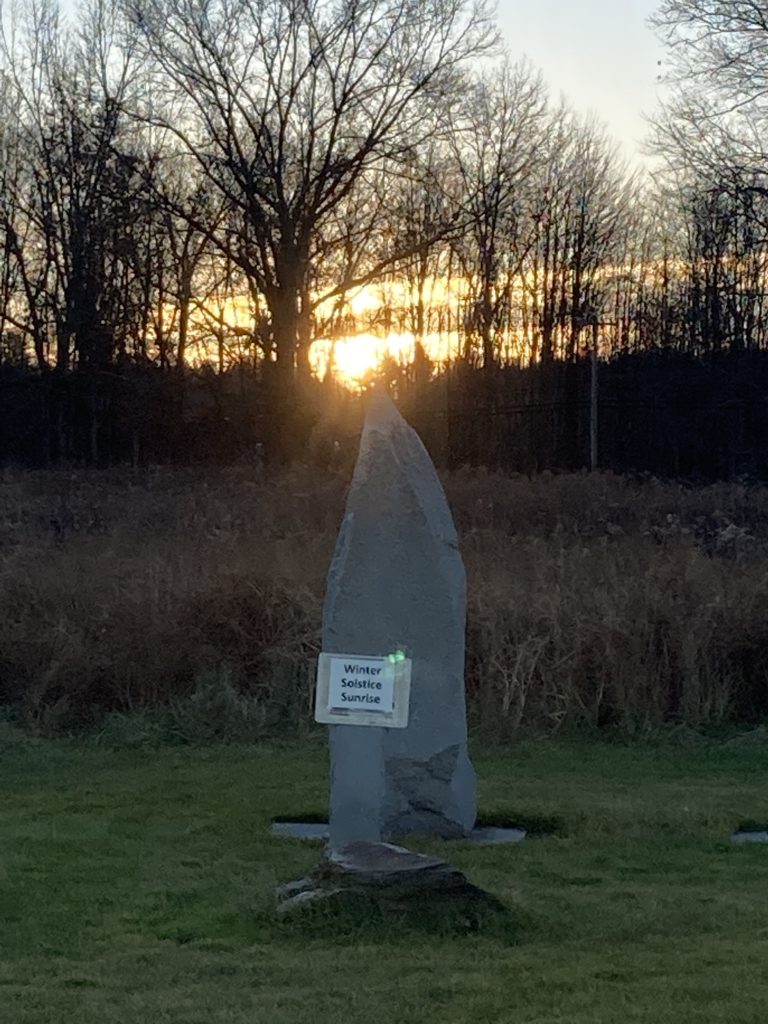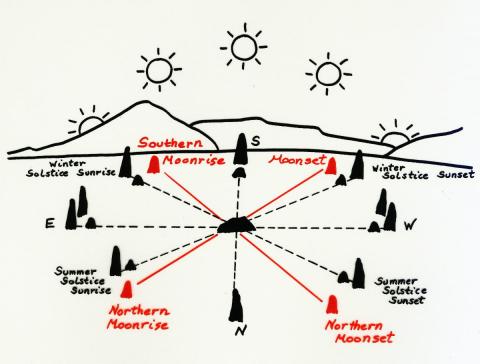Winter Solstice Sunrise And Sunset Gatherings At The UMass Sunwheel

Winter solstice at the UMass Sunwheel. Photo: umass.edu
Source: UMass News and Media
The public is invited to observe sunrise and sunset on the day of the winter solstice among the standing stones of the UMass Amherst Sunwheel on Tuesday, Dec. 21, at 7:00 a.m. and 3:30 p.m. Heavy rain or snow will cancel the gatherings.
The winter solstice occurs when daytime is shortest in the Northern Hemisphere. On this date the sun rises over the most southeasterly of the tall standing stone and sets over the most southwesterly stone of the Sunwheel. The sun actually reaches its southernmost position in the sky at 10:59 a.m. EST on Dec. 21, and then begins moving northward.
At the hour-long gatherings, UMass Amherst astronomers will discuss the astronomical cause of the solstice. They will explain the seasonal positions of Earth, the sun and moon, and the design of the Sunwheel and other calendar sites around the world. They will also answer other astronomical questions, such as why the earliest sunset occurs about two weeks before the solstice and the latest sunrise about two weeks later, or why the longest day of the year is actually December 22.

Sunwheel visitors who stop in on their own will be able to see the sun rising and setting over the winter solstice stones from roughly Dec. 16-26. This is because around the time of the solstice (which means stationary sun) the sun appears to rise at a fixed spot on the southeast horizon and to set in a fixed southwest direction for more than a week. The halting of the sun’s motion southward and the beginning of increasing daytime was the source of celebration for cultures in the Northern Hemisphere since ancient times.

Location: The UMass Sunwheel is located south of McGuirk Alumni Stadium, just off Rocky Hill Road. The Sunwheel can easily be reached from the center of Amherst, following Amity St. to the west, on the right hand side of the road about 1/4 mile after crossing University Drive.
For more information on the UMass. Sunwheel, click here. For more information on the Moon’s 18.6-year cycle, click here.
For directions to the Sunwheel from out of town, click here.


